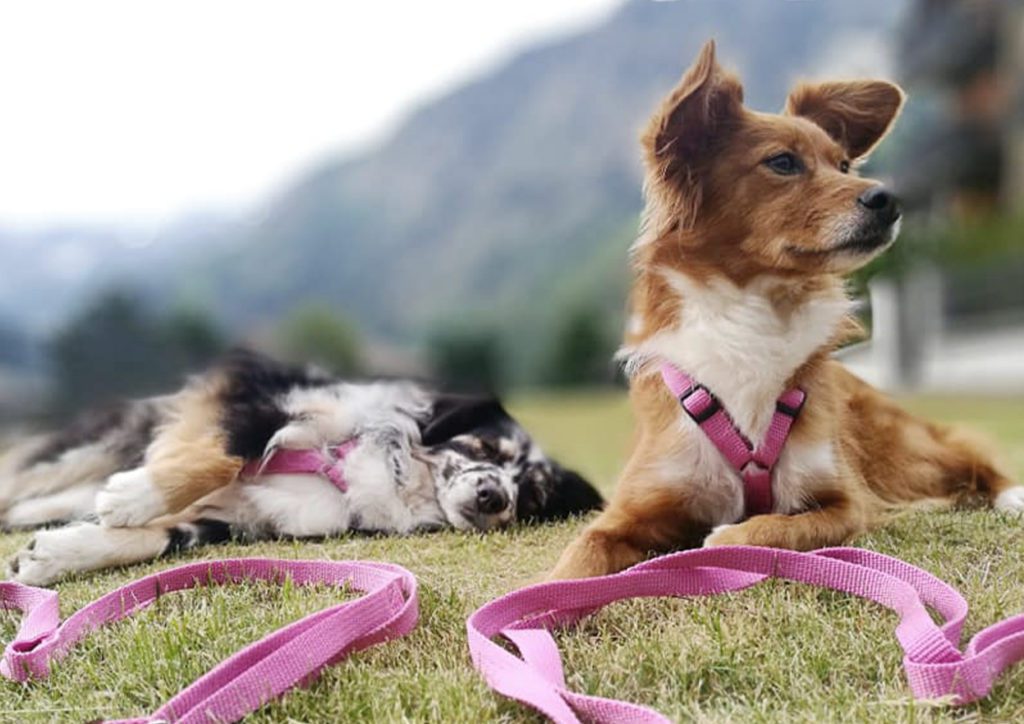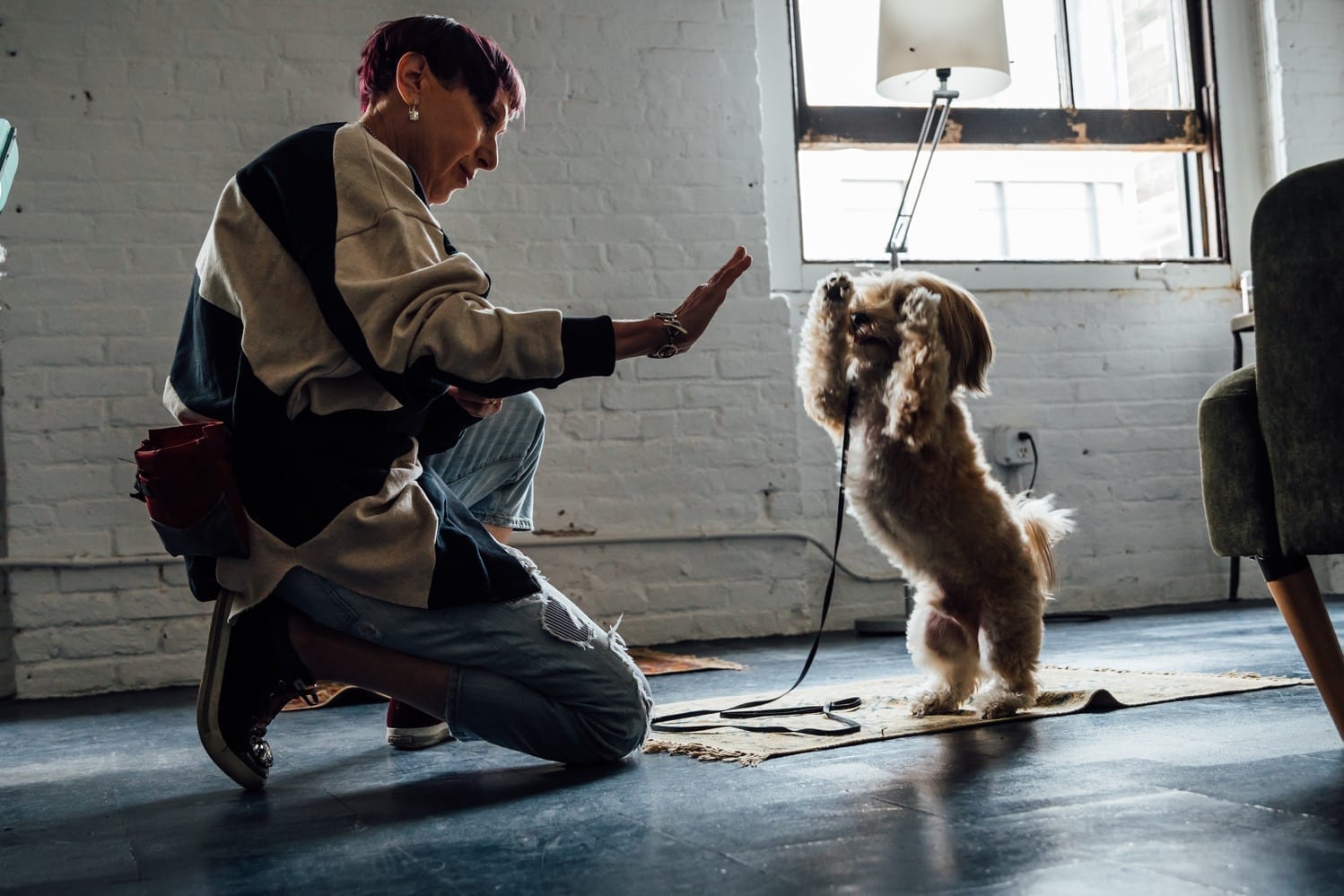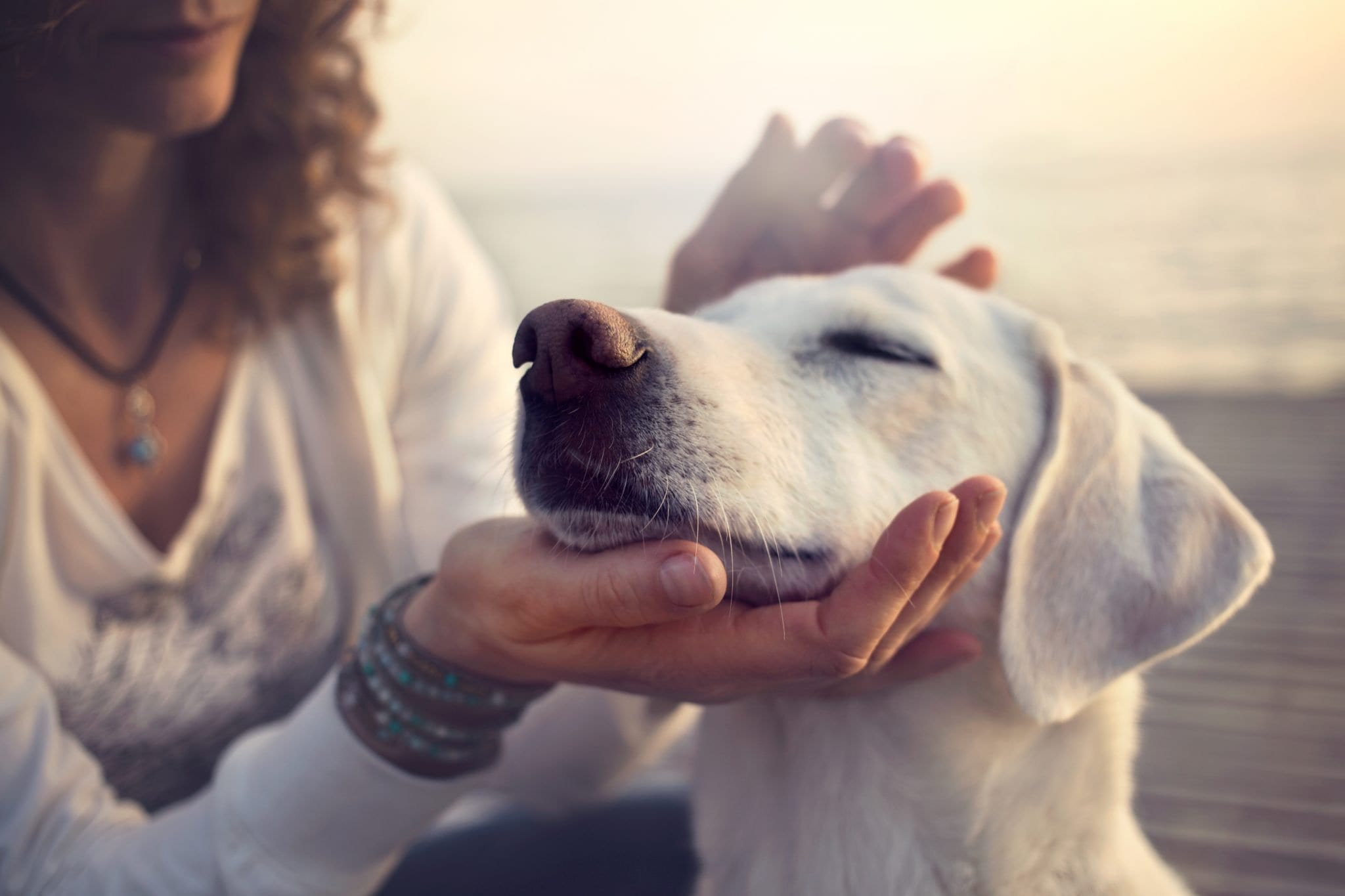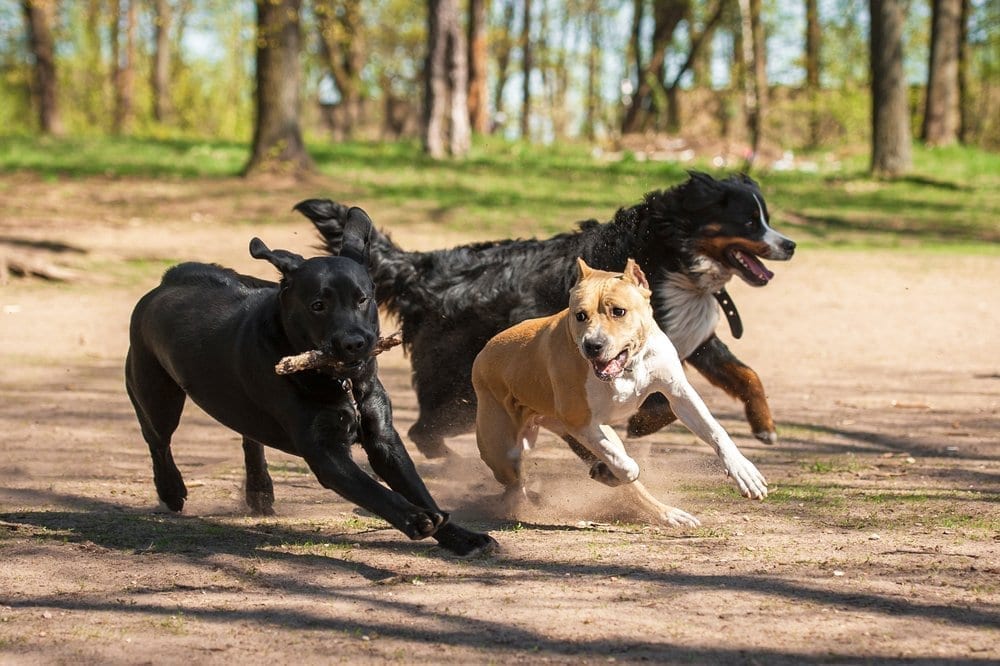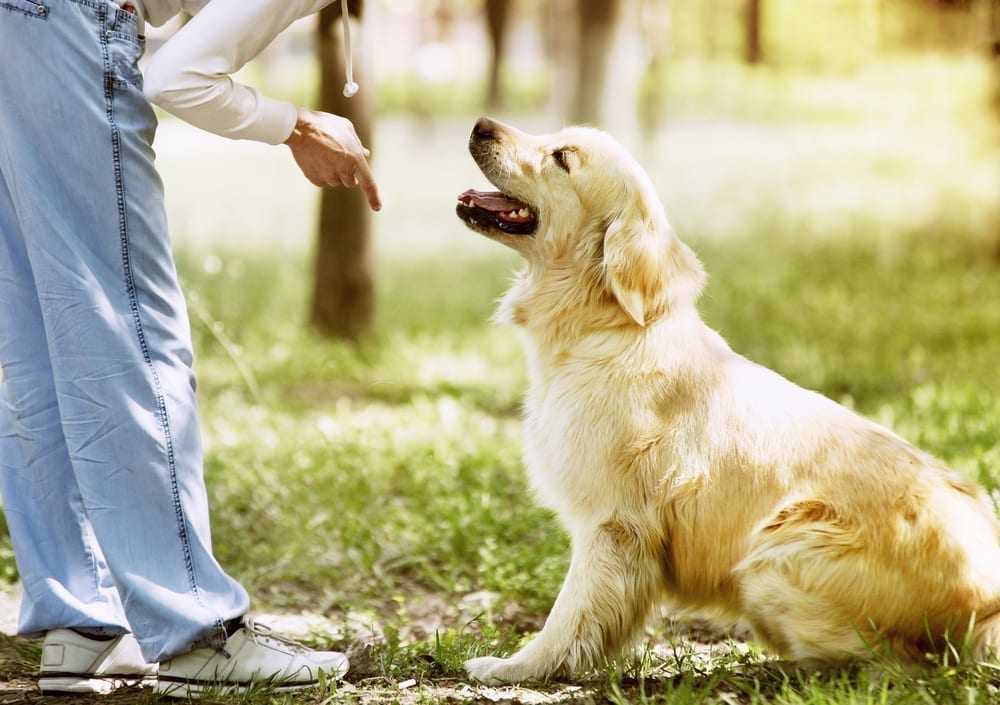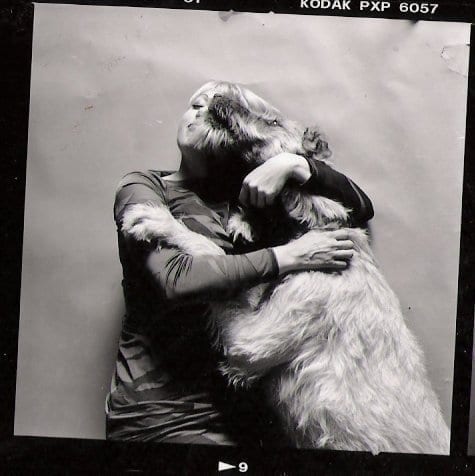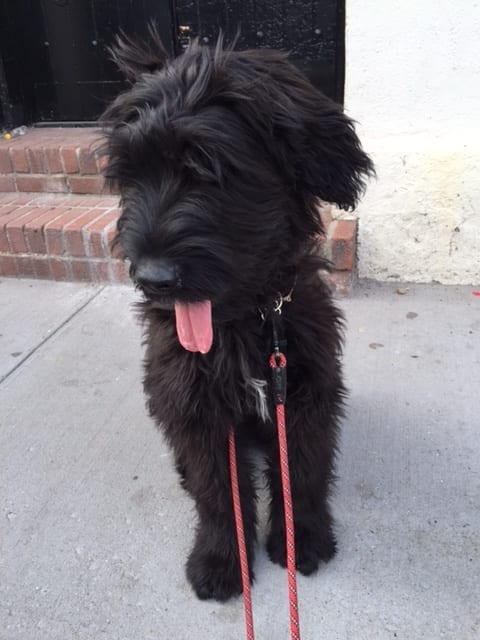https://kaylaurence.wordpress.com/2012/05/02/lead-off-good-lead-on-bad/
How do you ensure walking with you is not poisonous?
Every piece of equipment you put on your dog is punishing to some degree. All dogs will try to remove the least obnoxious collar when first introduced. Some equipment worn around the face will, for some dogs, invoke a lifelong need to remove it. Equipment is designed to make management of dogs easier for the benefit of people. Just because your dog gets excited when they see the equipment, it does not mean they “like it”. The production of the equipment is a pre-cursor to leaving the prison, just as your walking boots and coat.
Many of my clients are able to recognise that their dogs’ behaviors on-lead are different to off-lead. The differences between these behaviors evolve from thoughtless associations.
I always remember Ian Dunbar’s remark on punishing a puppy for peeing in the house. Jump up, scold puppy, remove it from warm, sitting room carpet and evict onto cold, wet grass. Shut door. Either the pup will learn to pee outside, or learn to avoid you and pee where you cannot see it. You will discover it sometime later, either because of the increasing smell or because you need to move the sofa. This is the problem with punishment – we cannot control the fallout.
How does equipment punish?
Just because the collar is pretty and of lovely soft fabric it does not make it pleasant to wear. At the least it will irritate. I have a lovely necklace on a very fine chain, that I would enjoy wearing more often if the chain didn’t seem to catch those very fine hairs on the back of my neck. And having experienced a hair cut yesterday I lived the rest of the day with one rogue hair between my bra and skin. And ladies – you know what that feels like. That need for ”adjustment” that should not be seen in public, and the only solution is a full removal, isolation and dismissal of offending 1mm of hair. Goodness knows what a collar all around the neck can do – particularly if the collar wears away the guard fur to a bristly length.
Then we also have the jingling, for some dogs every movement is a jingle. They wear their collar 24 hours a day, with some serious metal work clanking under their chin. At least let them sleep in peace.
Dogs can wear a collar and enjoy both the pleasant and unpleasant aspects of life – a poottle around the garden first thing in the morning checking out the overnight wildlife, through to a grab and yank to be stopped from snatching the custard tart dropped on the floor. Often the collar itself does not represent punishment or pleasure since both emotions are experienced when wearing a collar. But once we attached the collar to a lead it changes context and we begin a catalogue on unpleasant associations.
1. Frustration. Prevention from going to explore, investigate, chase and play; the main pleasures of being out and about, Going for a walk is to go shopping for sniffs – reading the myriad of scents and stories left by other animals. Frustration can begin with very young, inquisitive puppies, designed to learn from the experience of smell – taste – touch. Just the time when they are introduced to the collar being attached.
2. Being pulled around. The lead-collar is used to pull the dog where the person wants to go, at the speed the person wants, which removes choice for the dog. The direction may give every signal of “avoid” to the dog, but they have no choice and are dragged along.
3. Trapped. Being fondled by Stranger. This also goes under the euphemism of “socialisation”.
I was also exposed to “socialisation” as a child. I do not fondly remember Uncle Bert that stank of booze grabbing me, nor Aunt Ada who insisted on rubbing her whiskery cheek on mine. As a young child I put up with it, but at 15 years old I had learned avoidance.
The same with puppies, they will tolerate invasive greeting when they are young, but learn that this is not good manners as they grow older and try every form of communication to say “no thanks”, but because these socialisation experiences are happening when on-lead and next to the owner, they cannot avoid with grace, they may need to resort to avoid by threat.
4. Forced rudeness. Dogs are extremely skilled social creatures, and when their skills are developed in the right environment, they can move around mutual territories without causing offence or extreme reactions. They would stand-off on initial awareness, probably a good 15 metres (40ft) away and do some air sniffing, perhaps stand still with a pleasant tail wag (Hey, we OK?) and wait for a response before proceeding any closer. They may then move to the nearest scent point and leave more liquid information, or if the other dog has already done so, move over to read their information. It is gradual, respectful, and allows an escape if things don’t pan out.
Now you are walking along the street with your dog trotting at your side and you see another dog coming towards you. The progress you make towards each other is double the speed you are walking (remember the trains heading towards each other in Maths class?). Your dog will see a strange dog heading directly at them, with a speed indicating serious intent, a hostile approach. The width of our pavements prevents the space that represents respect and good manners. Before you know it the dogs are far too close, uncomfortable and forced to react. On-lead, next to you.
5. Walking out of balance. Dogs have four gaits: walk, trot, canter, gallop. When moving with their walking human pack, we usually see walk and trot. For dogs larger than a Cocker Spaniel, and a person less than 2m/6ft their trot is slightly faster than the human-walk, and the dog’s walk speed is too slow. (You can see the video of this: Movement Video on YouTube). At the other end of the scale the very large breeds can walk with our walk.
The restriction of the lead, in conjunction with punishment based head halters and harnesses, prevents the dog from either of their natural movements, walk or trot, and they are forced to pace. This is the same as if you were using your left arm going forward with your left leg, and right with right leg. After 20 paces, your back will begin to tighten up, and probably your fists clench in frustration. Now imagine a group of people walking towards you, very fast, with that peculiar pacing action – be suspicious huh? If you have a dog unable to pace, the outcome is yo-yo walking. Dog goes to end of lead, stops, waits for you, or is pulled back to your side, over the next 10 steps the dog is back at the end of the lead again. On-lead, next to you – uncomfortable.
6. Training. Not what I would call training, but often deliberate punishment through the equipment for human-perceived transgressions. On lead, next to you. Training class, chaos, shouting, barking, being bum-sniffed without warning, too close to other dogs. Yeah, love being on-lead.
7. Visiting the torture clinic. Aka The Vets. Which has every indication of being a Very Bad Place from the fear-scent of previous visitors. Drag, pull, collar tight, finger up bum. On lead, next to you.
8. Street walking. Breathing pollution. Sneeze, yuck. Bad smells, squealing brakes. On lead, next to you.
Off lead is heaven
Explore, run, walk trot, stop, start. No pacing. Follow, search, aaaah, read a good article, add perfumes to your neck and shoulder. Pleasure. Chase a pigeon, nibble some sheep poo, move away from weird oncoming dog.
Free choice, to be touched or not, free choice to be sniffed or not. Unlimited credit card in favourite shop.
Without thinking we exaggerate the pleasure of being off-lead in comparison to on-lead. All the bad things happen on-lead and all the true pleasures are off-lead. Any wonder that the dog’s behavior is quite different? Not only is the association with the equipment but also next to you. This is worrying, if your dog spends most of the time trying to move away from you shouldn’t we take notice? Additionally there are often specific occasions and environments when this association is predictable – walking down the street, training classes, meeting people and dogs.
Your options:
1. Never take your dog out on a lead.
In some environments totally impractical. But you may be able to go to the woods, park your car, let the dog out directly to free running? It is a rare dog that grows up in a safe environment where restriction is unnecessary.
2. Never let your dog experience free running.
All pleasant and unpleasant experiences are in association with the same environmental cues. You can cue close walk with me with a certain lead, or collar, and free running with a long line, or self-retracting lead and harness. Or you can free-run with your dog on a lead?
3. Give more pleasant experiences, and block or avoid unpleasant experiences on-lead.
- Give your dog time to make choices, when you want to change direction. Invite, don’t pull.
- Walk slower so that your dog can move at a natural gait, or jog at their trot.
- Respect that they go out for the pleasure of sniffing, give them time to sniff.
- Cross the road, move away when you see fast on-coming, hostile, dog-person traffic.
- Don’t force intimate contact from either strange dogs or people unless that is the dog’s choice.
- Teach your dog structured scent games: tracking, substance searches etc, enjoy their activity with your dog whilst on-lead.
- Play, games of tugging, sausages games within the length of the lead. Ensure pleasures and play around you, not always throw and chuck and dog runs off.
Be Aware.
In reality we need to use equipment to keep the dogs safe from threats they cannot understand or have the skills to avoid. Make sure you do not unbalance the association with this equipment with most of the unpleasant events in outdoor life happening on-lead, and all the most pleasant events off-lead.






